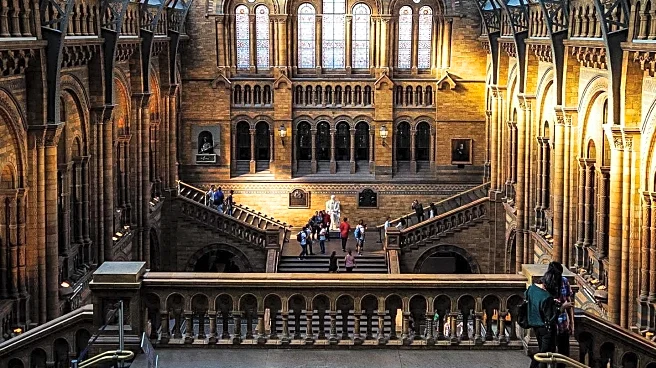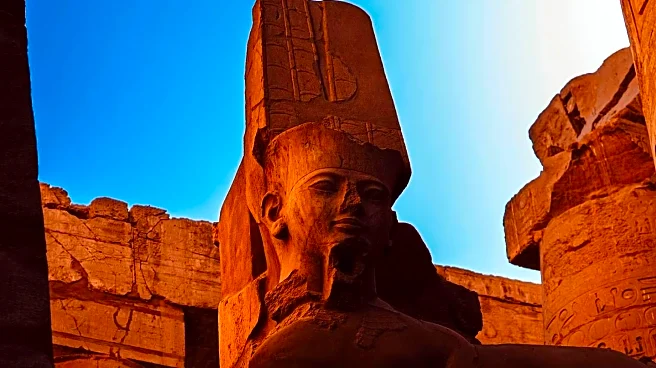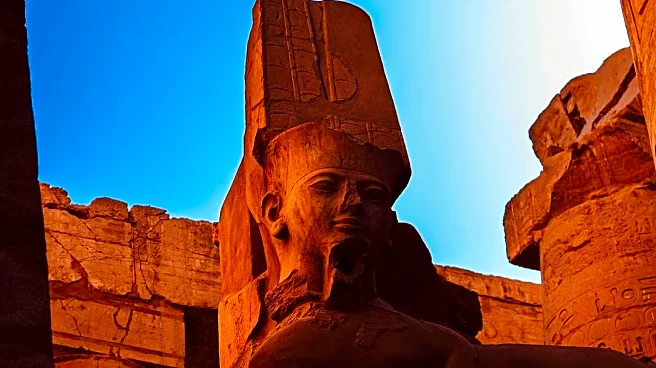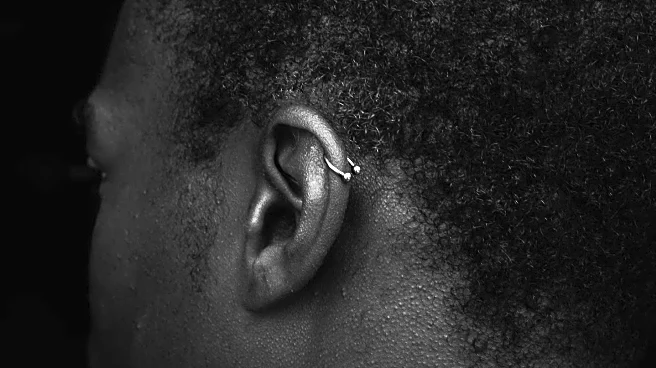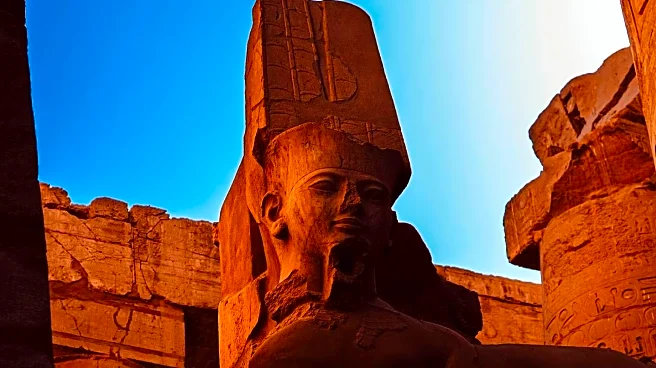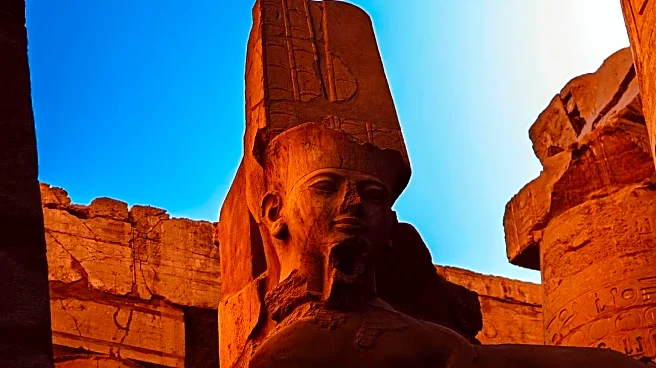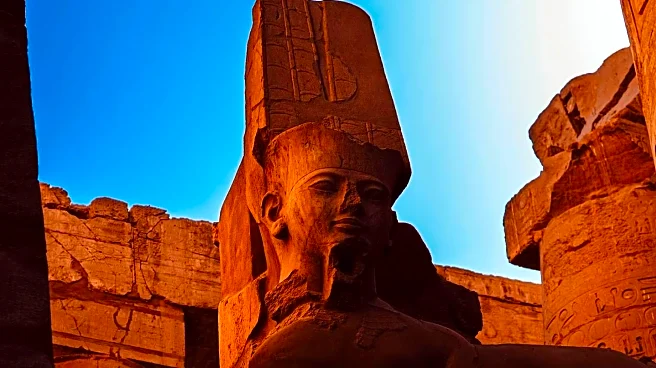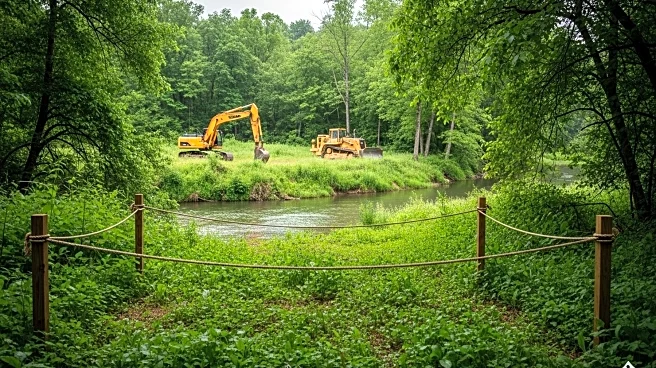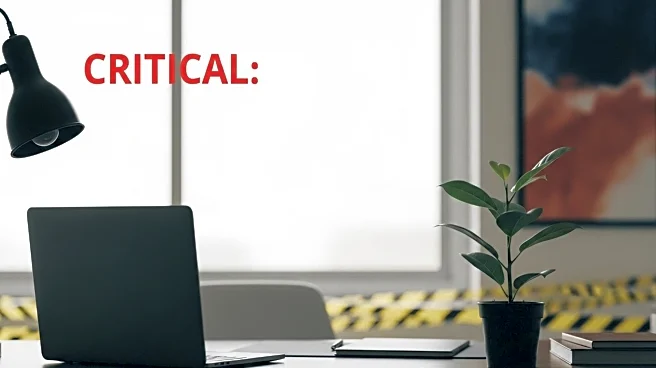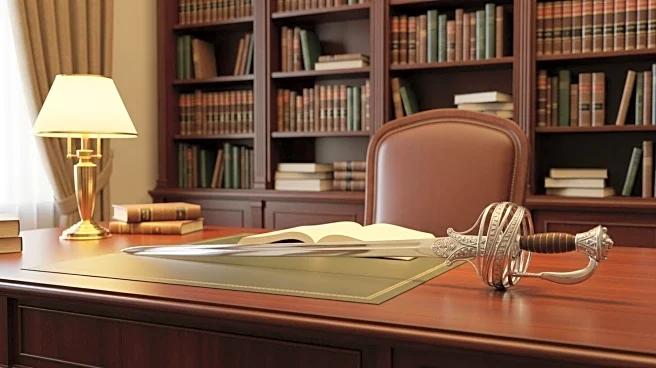What's Happening?
A 2,300-year-old Egyptian mummy named Pa-Sheri is undergoing restoration work at the University of Lincoln. Originally brought to Britain in the 19th century, Pa-Sheri has been part of the Derby Museums collection since at least 1859. The mummy, which dates back to Egypt's Ptolemaic period around 300 BCE, was severely damaged during previous examinations, including unwrapping and rearrangement of bones. Two student conservators, Ella Maude and Ella Monteiro, are leading the restoration project funded by the Pilgrim Trust. Their work involves strengthening the cartonnage, cleaning fragile surfaces, and replacing supports beneath the funeral mask. The restoration aims to preserve Pa-Sheri without attempting to restore him to an imagined original state. The mummy will soon return to Derby Museums for display alongside another mummified individual, Pypyu, in an exhibition exploring the colonial history of Egyptian artifacts in British museums.
Why It's Important?
The restoration of Pa-Sheri highlights the importance of preserving cultural heritage and addressing the historical context of artifacts acquired during colonial times. This project not only conserves an ancient artifact but also raises awareness about the ethical considerations of museum collections. By focusing on minimal intervention, the conservators aim to maintain the integrity of the mummy while acknowledging the damage caused by past practices. The exhibition at Derby Museums will provide an opportunity for the public to engage with the history of Egyptian artifacts and their journey to the UK, fostering a deeper understanding of cultural heritage and its preservation.
What's Next?
Pa-Sheri is set to be displayed at Derby Museums alongside Pypyu in a new exhibition. This exhibition will delve into the history of how Egyptian artifacts were brought to the UK, often through colonialism and occupation. The display aims to educate visitors on the significance of these artifacts and the importance of preserving them responsibly. The museum may continue to explore similar projects, potentially leading to further collaborations with academic institutions for conservation efforts. The exhibition could also spark discussions on the repatriation of cultural artifacts and the ethical responsibilities of museums.
Beyond the Headlines
The restoration of Pa-Sheri not only preserves an ancient artifact but also serves as a reminder of the complex history of museum collections. It prompts a reevaluation of how artifacts are treated and displayed, encouraging museums to consider the ethical implications of their collections. This project may inspire other institutions to adopt similar conservation approaches, focusing on minimal intervention and historical context. Additionally, it highlights the role of academic institutions in preserving cultural heritage and fostering public engagement with history.

